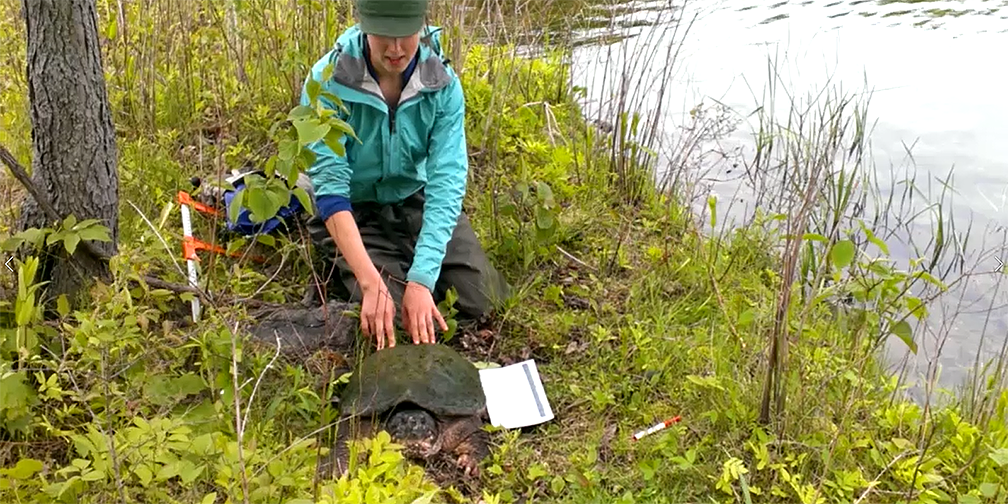Ontario Nature Blog
Receive email alerts about breaking conservation
and environmental news.
© Lora Denis
Snapping turtle research with Ontario Nature staff
Step 1. Scoop the turtle into your net.
Step 2. Lift the turtle into your canoe. Word of warning – this is easier said than done. Be prepared to need the strength of two people, and bend at the knees so you don’t put your back out.

Megan processing a large snapping turtle © Catherine Jimenea
Step 3. Paddle back to shore as fast as possible. The turtle will be angry that you have interrupted its leisurely swim and will therefore be snapping at you. You may need to use your paddle to fend off its attacks.
Step 4. Pull the canoe out of water and tip it to get the turtle out. There is no point trying to lift that sucker again – your back will protest if you do.
Step 5. Awkwardly dance around the turtle, aiming to land at its backend. It will keep trying to turn and face you. Make sure that doesn’t happen.
Step 6. Grab the turtle at the base of its shell and flip it on its back so that you can measure its plastron.
Step 7. Flip the turtle on the side to measure its dome height. It really hates this one so move quickly. Flip it back over and measure the carapace length and width – all the while keeping-up your awkward dance.
Step 8. Time to weigh the turtle. Don’t have a bag big enough to put the turtle in? Buckle it up in a life jacket and hook the scale onto the straps. You’ll need both arms to lift all 45 pounds.
Step 9. Notch a unique identifier into its shell. Good luck with this struggle. Try for a notch on one or two of its back scutes. Be prepared for scratches. (Note: Only do this if you have a permit.)
Step 10. Take a picture of the turtle for your research files – and to remember the fabulous time you spent together.
Now you can release the turtle, take a breather, and book a chiropractor appointment. You’ll need one.

Proposed 413 Route, Old School Road with farm and escarpment view © Noah Cole
Hilarious!